
Clubbed Mydas Fly
New in 2015: My best fly pictures presented on a dedicated page. Captured in or near The Woodlands TX unless otherwise noted.

This is a huge and unusual fly, resembling a wasp. I thought it was a hummingbird when I first saw it! It's about as big as the medium-size Zinnia flower it's on.
Thanks to the folks at BugGuide.net it's been identified as a Mydas Clavitus (Clubbed Mydas Fly). The antennae ends are "clubbed" thus that part of the name.
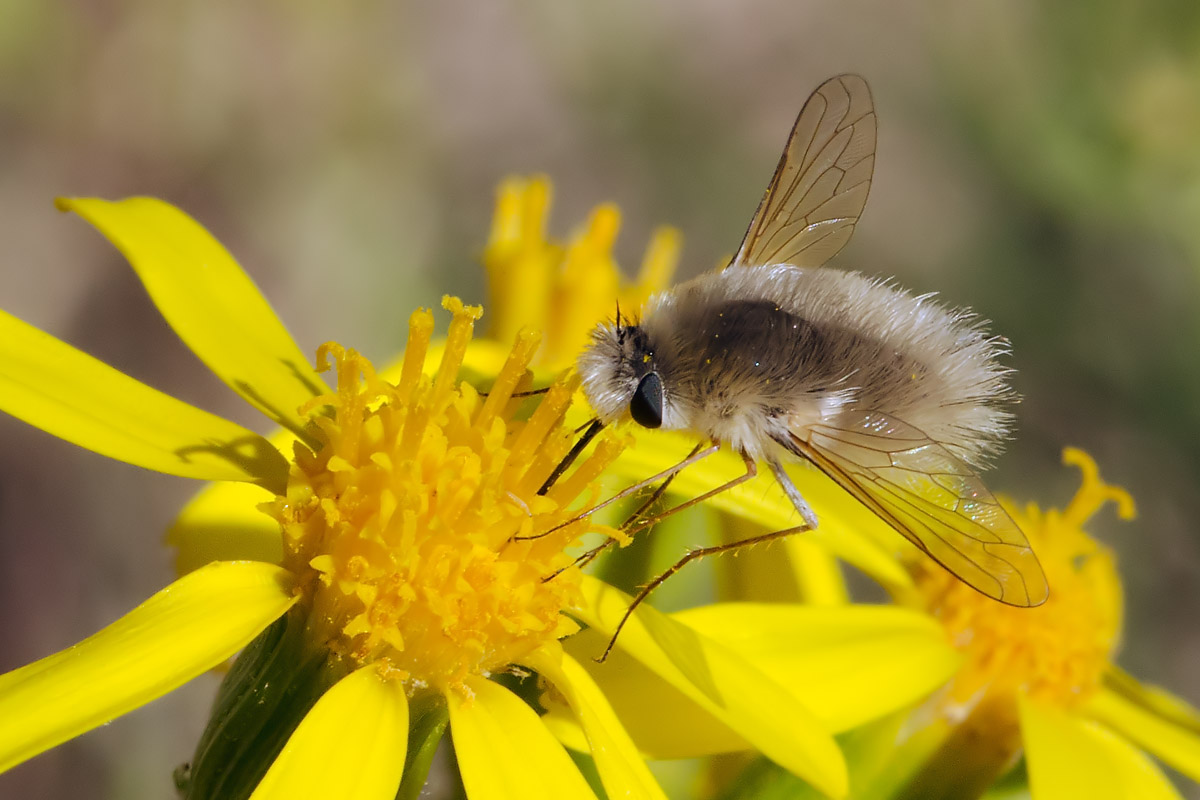
This hairy bee fly is from my Fall 2011 trip to the Davis Mountains. Per Gil: This is Anastoechus barbatus, one of the bee flies, Family Bombyliidae. This species has no common English name, as far as I can tell. Their young parasitize grasshoppers, while the adults come out in the fall in Texas to feed on nectar, with long proboscis. Adults hover as bees or hummingbirds do.
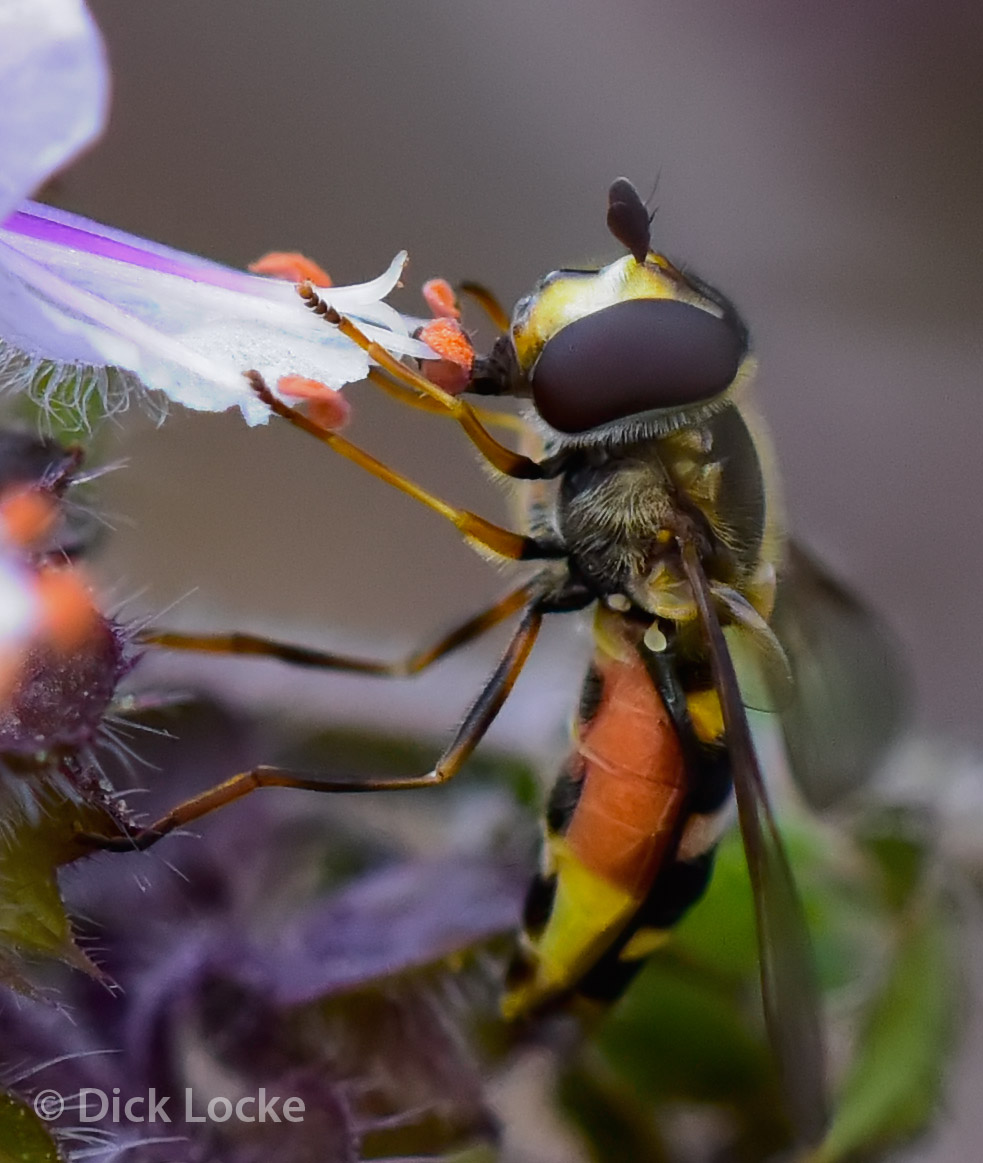
Caught this guy on a warm December day 2016 in the back yard. That's a basil flower he's on. Their larvae feed on aphids, which is nice. Hard to see in this pic but they have wasp-like markings, I'm sure to project a "do not mess with me" image. The bugguide link is here. This is a lucky shot due to the relatively slow shutter speed of 1/640s with the Nikon D810 & 200mm macro lens, f6.3 and ISO 1600, no flash. After combing though too many blurry shots at that shutter speed I decided that's just too slow for bugs that are moving.
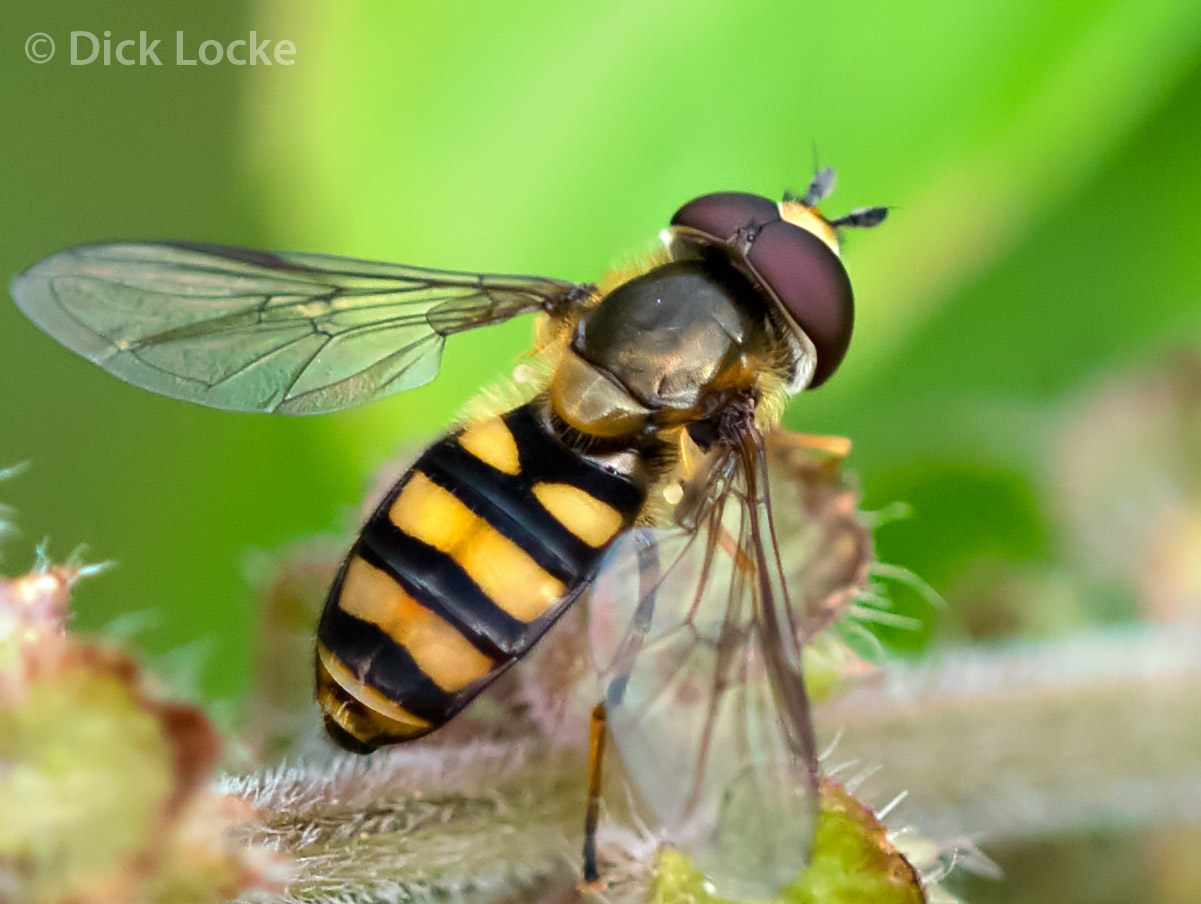
Another new fly for me, December 2016 in the back yard. Bugguide link with details here. Nikon D810, 200mm macro lens, f5.6, 1/100s, ISO 1000, no flash.
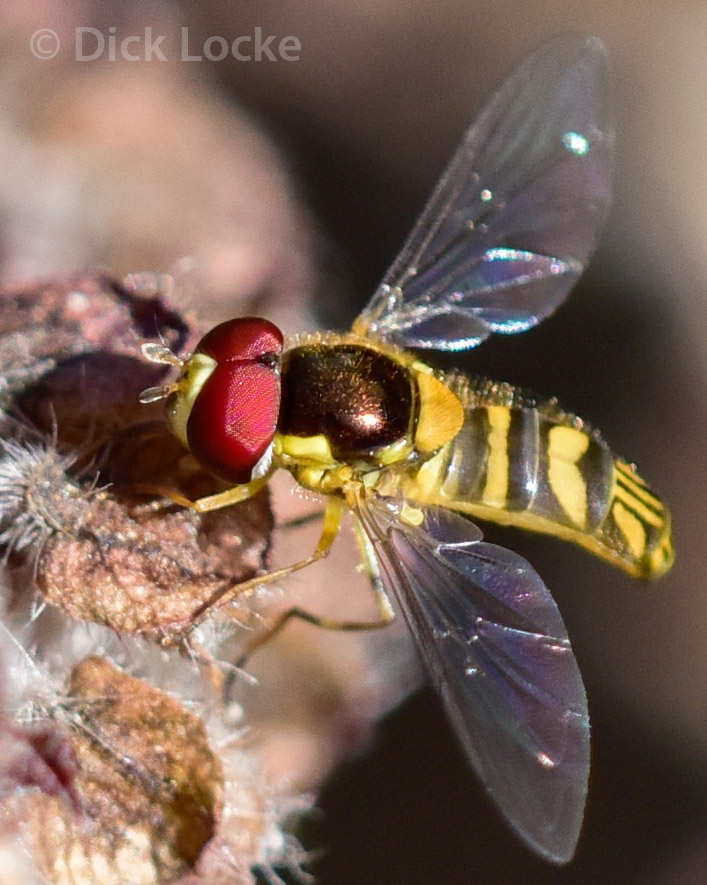
Backyard 12/21/16. Nikon D810 & 200mm lens with macro flash setup, f6.3, 1/1000s, ISO 800 (shutter priority). If you go with 1/1000s you'll get a lot fewer blurry bug images than if you go slower. Bugguide link here.
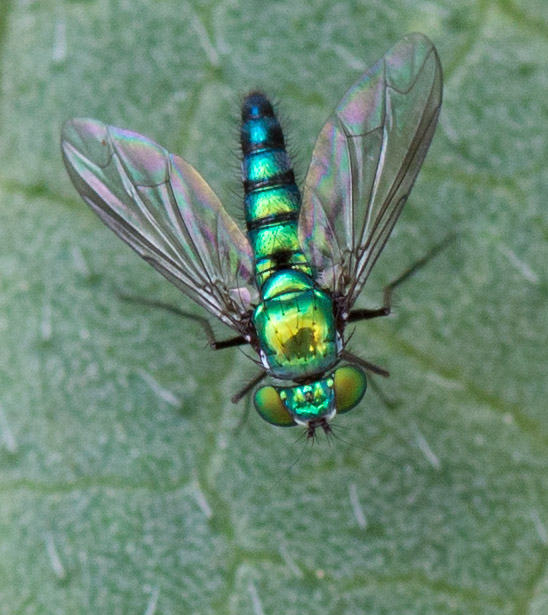
This colorful fly was captured in my Texas backyard. It is really tiny and this picture is presented at the full camera resolution. Exposure Details: Nikon D610, 105mm VR macro, f8, 1/320s, ISO 800, spot metered. My email buddy Gil kindly provided the following information: Your blue-green fly is one from the family Dolichopodidae (which means “long-footed”). These are commonly called “Long-legged Fly”. There are well over 1000 species in N. America. Most are metallic green, blue, or copper, and most are under a quarter of an inch in size, but some are bigger and some look nothing like the one in your photo. The character all species in the family have in common is the particular pattern of wing venation. Long-legged flies are harmless to humans, and probably beneficial, as they prey on tinier arthropods like aphids and mites. They tend to be found near water, as most have aquatic larvae.
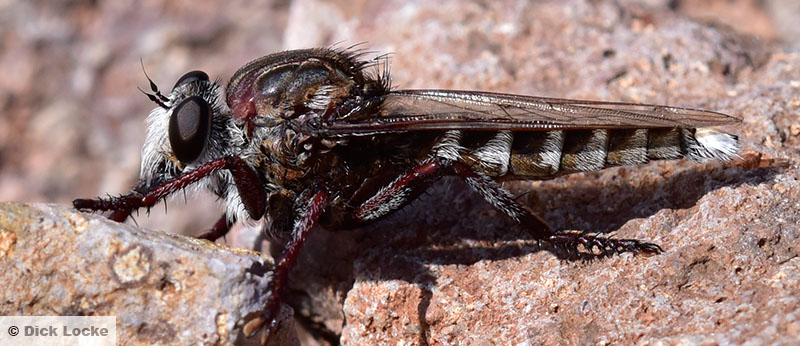
This is from the Fall 2015 trip.
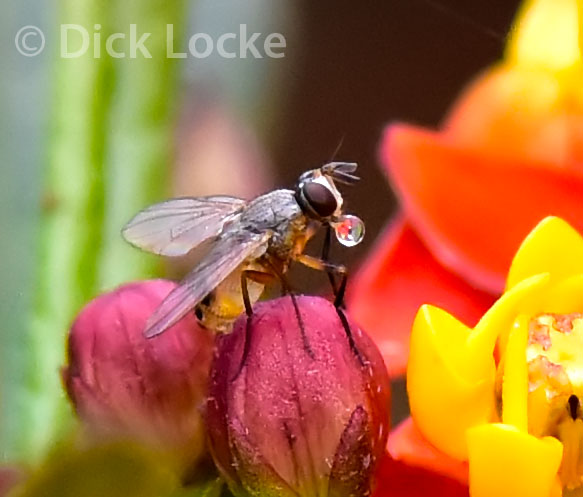
Back yard 12/2016, possibly a Shoot Fly->Bermudagrass Stem Maggot, Atherigona reversura. Bugguide link, which includes a link to the bubbling behavior, is here. The fly is on milkweed flowers.
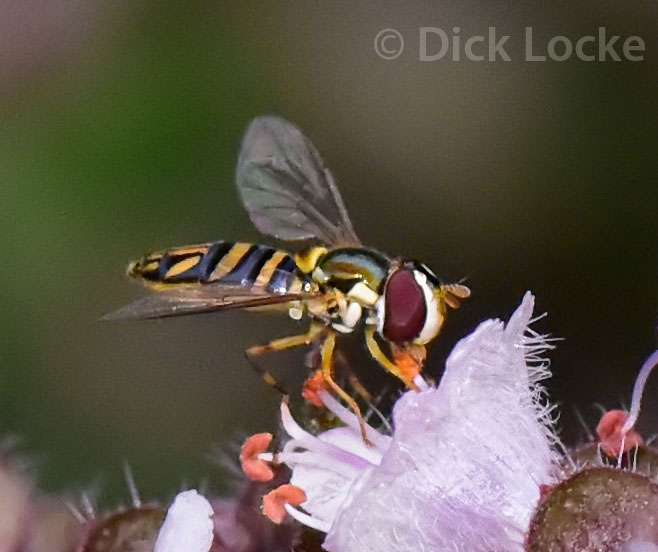
Another December 2016 capture; this guy is also very very small... Makes for quite the challenge for the photographer!


Robber Flies are voracious predators. They slam into their prey with force, then suck the nummy juices out of their prey.
"Order Diptera, family Asiladae, many species. ...They suck their prey dry with hypodermic-like mouthparts. .... Help to control troublesome insects, especially files ... and mosquitoes. ... The common name of this ferocious insect comes from its habit of pouncing on prey." (Texas Bug Book, by Beck and Garret) See more robber flies on my
bug picture page. This was from Wimberley I
believe.

This variety of crane fly shakes rapidly after landing, which makes it hard to see and hard to photography. It looks like a bit of fluff fluttering in the breeze. Bugguide link here. Crane Flies (Tipulomorpha)
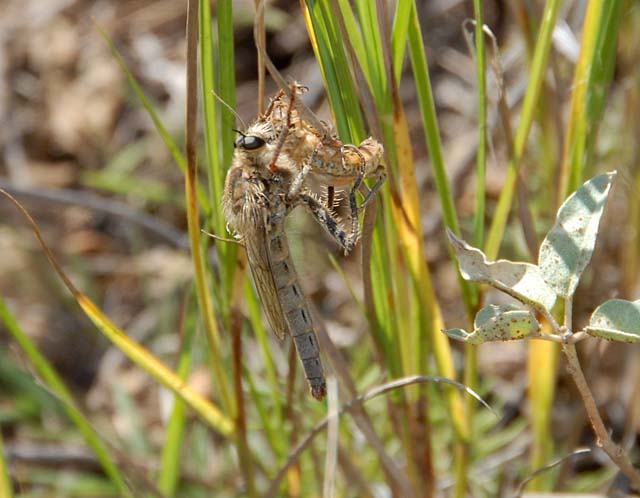
These guys are much easier to photograph when they are carrying lunch, as lunch slows them down a great deal... Davis Mountains, West Texas, 10/2007.
|
|
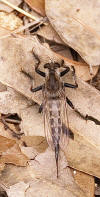 Robber fly with prey from the top. You can't really tell that it is dining. |
|
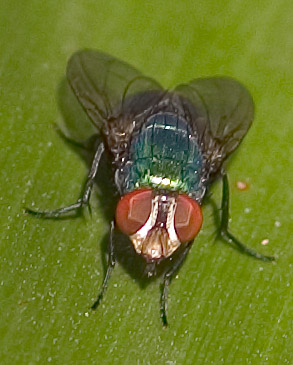 Bonus: Fly! |
 Flesh Fly (I believe!) Cool eye colors. |
Images Copyright ©
by Dick Locke. All Rights Reserved.
Image Use Information